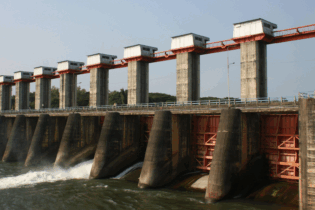By Happy Masondo (director at Werksmans Attorneys)
South Africa’s strategy to make a contribution towards greenhouse gas emission mitigation was adopted by the government in 2011 when the cabinet approved the carbon tax policy paper. This was after the commitment made by the country at the 2009 Copenhagen Conference of Parties to undertake appropriate national actions to curb greenhouse gas emissions by 34% by 2020 and a further 42% by 2025. South Africa is one of the top 20 countries measured by absolute carbon dioxide emissions, with emissions per capita in the region of 10 tons a year. The government is of the view that South Africa needs to reduce its emissions while working to ensure that there is economic growth, increased employment, and reduction of poverty and inequality. At the UN climate change conference, COP17, in 2011, the government, through its various departments, reiterated and emphasised South Africa’s commitment to support efforts addressing the adverse factors posed by climate change. The white paper on the Renewable Energy Policy of South Africa (DME, 2003b) recognised climate change as one of the major environmental threats facing the world today. In its recognition, the government has made concerted efforts as a responsible global citizen, to reduce its use of fossil fuels through the implementation of renewable energy programmes aimed at reducing South Africa’s significant reliance on conventional fossil fuels. In the National Treasury’s press release of May 2, 2013, there are at least three ways in which the imposition of a carbon tax will work to drive changes in producer and consumer behaviour and therefore address the adverse effects of climate change.Carbon pricing is the generic term for putting a price on carbon through subsidies, a carbon tax, or an emissions trading (cap-and-trade) system.
First, carbon pricing will encourage a shift in production and consumption patterns towards low carbon and more energy-efficient technologies by altering the relative prices of goods and services based on their emissions intensity and encouraging the adoption of cost effective and low carbon alternatives. Pricing carbon emissions addresses the problem of negative externalities obliging polluters to pay for their carbon emissions. Second, carbon intensive factors of production, products and services are likely to be replaced with low carbon emitting alternatives. Finally, a carbon price is envisaged to create dynamic incentives for research, development and technology innovation in low carbon alternatives in order to achieve the reduction and to reduce the price gap between conventional, carbon intensive technologies and new low carbon alternatives. This article has been edited and shortened. For the full article please email hmasondo@werksmans.com







